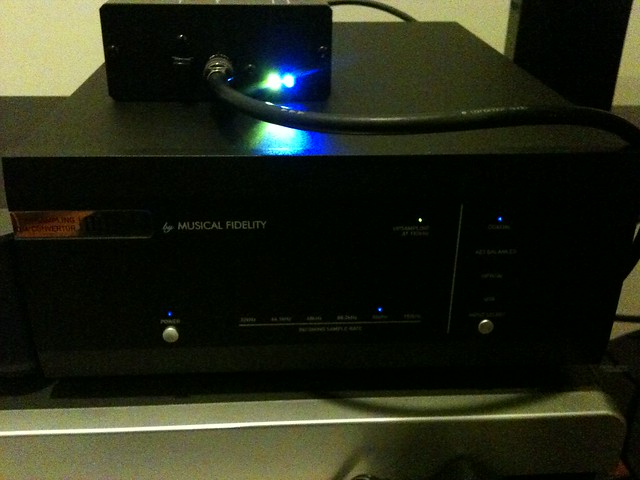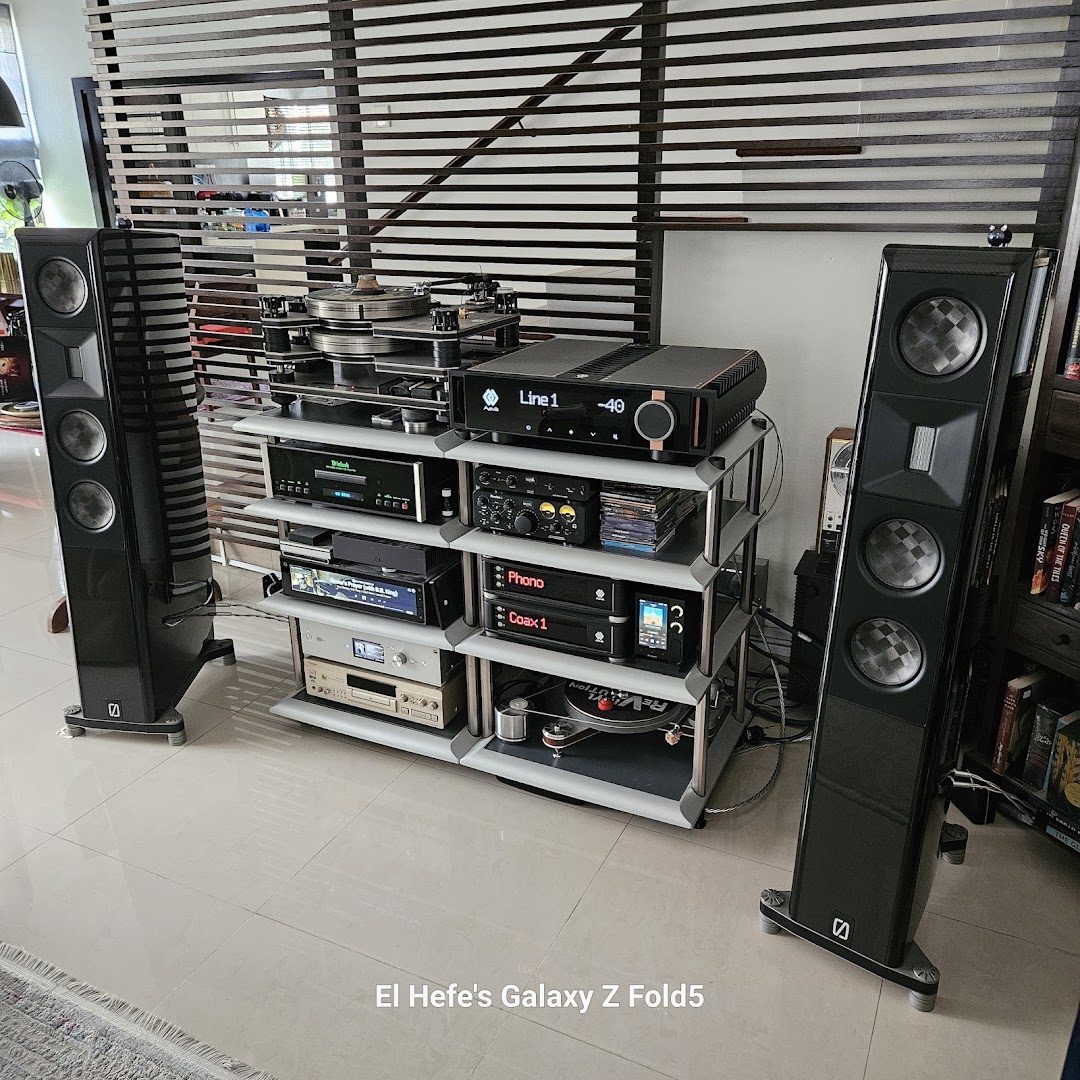

OK. Overdue review. Was travelling and sick for the past week.
So, MF distributor offered me to review this unit as it has just arrived in his stock 2 weeks back. Yes, the unit is actually on the market for a while now but just officially brought into Malaysia.
So what does it do? It basically offer a solution for those USB 48kHz/16 bit limited bandwidth input on any existing DAC, including my M1 DAC.
Its commercial name: 24 BIT 96 kHz ASYCHRONOUS USB TO S/PDIF CONVERTER WITH COAX AND OPTICAL OUTPUT
Connect the unit to yr PC/laptop USB port (using A/B USB cable), it then upsamples it to 96kHz and feed this signal constantly to your DAC via optical or coaxial. Just as long as your DAC coax or optical can receive 96kHz signal and above, you are good to go.
My M1 DAC detects the 96kHz easily as shown in the picture. Then the DAC upsamples it further to 192kHz. Not sure whether this repetitive upsampling is actually good or not. Hehehehe.
So my findings:
Build
As it comes under MF's V series, the built is as expected to be lightweight, mainly to make it affordable. But nothing to complain about. It is however bigger in size than I expected. Light but sturdy with all the connections to be solidly placed and does not wiggle when you try to push in that coax cable in. You have to push your coax cable all the way in before it can output the signal.
The 'Lock' and 'Power' LED however is a tad too bright as you can see above in comparison the M1 DAC LEDs.
Power
No external power supply is required. It takes power from your PC/laptop via the USB cable.
The Session
I did not do any serious comparison apart from an A/B comparison between the following:
1. Laptop connected directly to M1 DAC USB input
2. Laptop connected to VLink and to M1 DAC via coax
Tracks used:
1. La Mer - Kevin Kline
2. Time to Say Goodbye -Andrea Bocelli
3. My Hero - Foo Fighters
First impression of Vlink - Bold and bass heavy. It sorts off amplified the overall digital file.
Volume wise, there is definitely a different between straight USB connection than via the Vlink. At the same volume level on the amp, the Vlink produces a louder sound.
Details however, I cant seem to hear much difference between the two connections above. Maybe because both are upsampled to 192kHz anyway.
I would however give credit to Vlink for creating a livelier music experience. It does inject some air into the digital music. It might just be my mood that night but the La Mer definitely sounded more emotional and the vocals by Kevin Kline sounded so near to me.
Verdict
For the given price, it is to me a well worth upgrading route for PC based music lover with limited bandwidth USB input on their DACs. Or even for DAC without USB input.
For me, I am not a hardcore PC-based music lover. I do stream my music across the house using AE, but I dont really measure their SQ. As long as there is music in the background I am OK.
So, its your pick.
So, MF distributor offered me to review this unit as it has just arrived in his stock 2 weeks back. Yes, the unit is actually on the market for a while now but just officially brought into Malaysia.
So what does it do? It basically offer a solution for those USB 48kHz/16 bit limited bandwidth input on any existing DAC, including my M1 DAC.
Its commercial name: 24 BIT 96 kHz ASYCHRONOUS USB TO S/PDIF CONVERTER WITH COAX AND OPTICAL OUTPUT
Connect the unit to yr PC/laptop USB port (using A/B USB cable), it then upsamples it to 96kHz and feed this signal constantly to your DAC via optical or coaxial. Just as long as your DAC coax or optical can receive 96kHz signal and above, you are good to go.
My M1 DAC detects the 96kHz easily as shown in the picture. Then the DAC upsamples it further to 192kHz. Not sure whether this repetitive upsampling is actually good or not. Hehehehe.
So my findings:
Build
As it comes under MF's V series, the built is as expected to be lightweight, mainly to make it affordable. But nothing to complain about. It is however bigger in size than I expected. Light but sturdy with all the connections to be solidly placed and does not wiggle when you try to push in that coax cable in. You have to push your coax cable all the way in before it can output the signal.
The 'Lock' and 'Power' LED however is a tad too bright as you can see above in comparison the M1 DAC LEDs.
Power
No external power supply is required. It takes power from your PC/laptop via the USB cable.
The Session
I did not do any serious comparison apart from an A/B comparison between the following:
1. Laptop connected directly to M1 DAC USB input
2. Laptop connected to VLink and to M1 DAC via coax
Tracks used:
1. La Mer - Kevin Kline
2. Time to Say Goodbye -Andrea Bocelli
3. My Hero - Foo Fighters
First impression of Vlink - Bold and bass heavy. It sorts off amplified the overall digital file.
Volume wise, there is definitely a different between straight USB connection than via the Vlink. At the same volume level on the amp, the Vlink produces a louder sound.
Details however, I cant seem to hear much difference between the two connections above. Maybe because both are upsampled to 192kHz anyway.
I would however give credit to Vlink for creating a livelier music experience. It does inject some air into the digital music. It might just be my mood that night but the La Mer definitely sounded more emotional and the vocals by Kevin Kline sounded so near to me.
Verdict
For the given price, it is to me a well worth upgrading route for PC based music lover with limited bandwidth USB input on their DACs. Or even for DAC without USB input.
For me, I am not a hardcore PC-based music lover. I do stream my music across the house using AE, but I dont really measure their SQ. As long as there is music in the background I am OK.
So, its your pick.

